Closer look at Chesapeake Bay Foundation's Brock Environmental Center, the 2017 AIA COTE Top Ten Plus honoree
By Justine Testado|
Monday, Apr 24, 2017
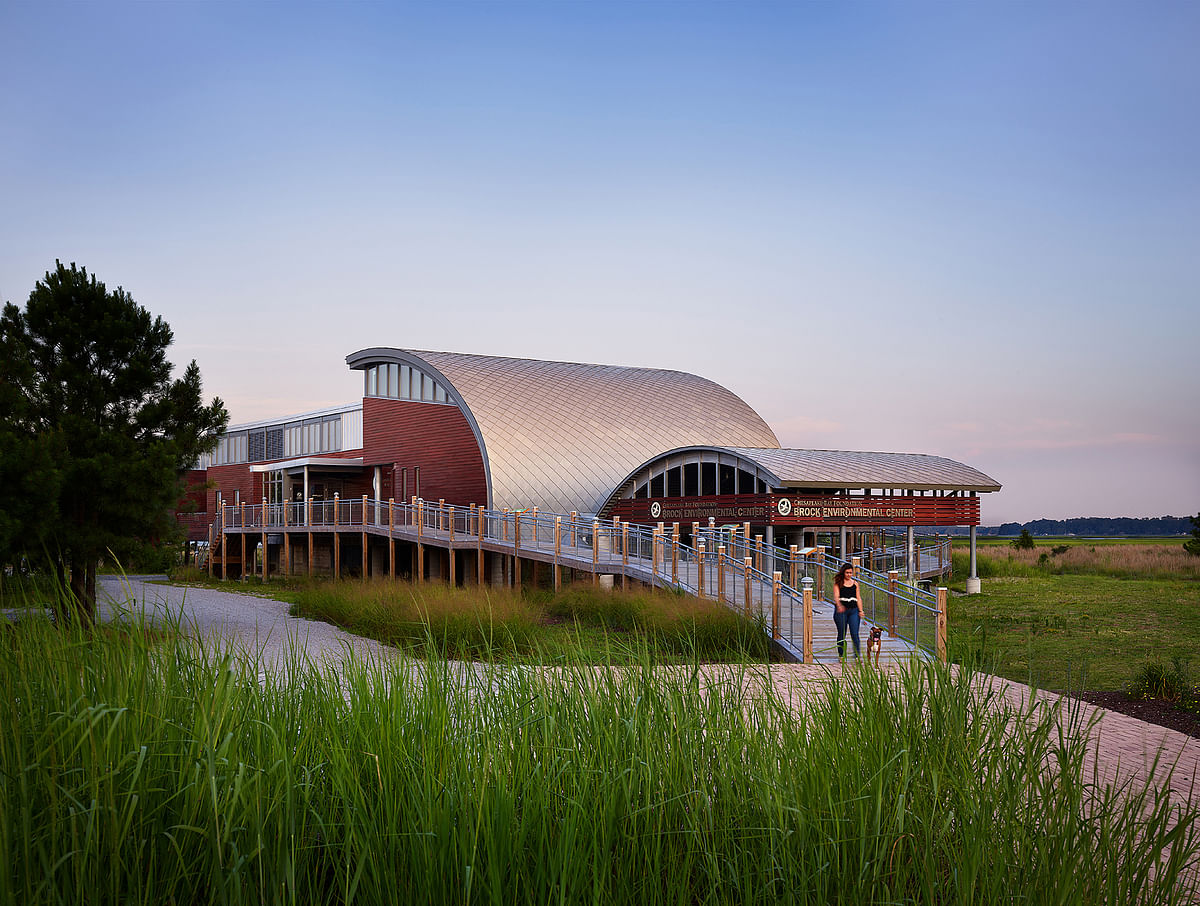
Related
The Chesapeake Bay Foundation appointed architecture and engineering practice SmithGroupJJR to design their Hampton Roads office hub, known as the Brock Environmental Center in Virginia Beach. Fully completed in 2015, the Center supports the CBF's education, advocacy and restoration initiatives and reflects their core mission to protect Chesapeake Bay. The Center remarkably surpassed LEED-achieving zero-net-CO₂ emissions, zero waste, and received Living Building Challenge certification from the International Living Future Institute. As a result, the AIA COTE chose the project as the 2017 COTE Top Ten Plus honoree.
Read on for more about the project.
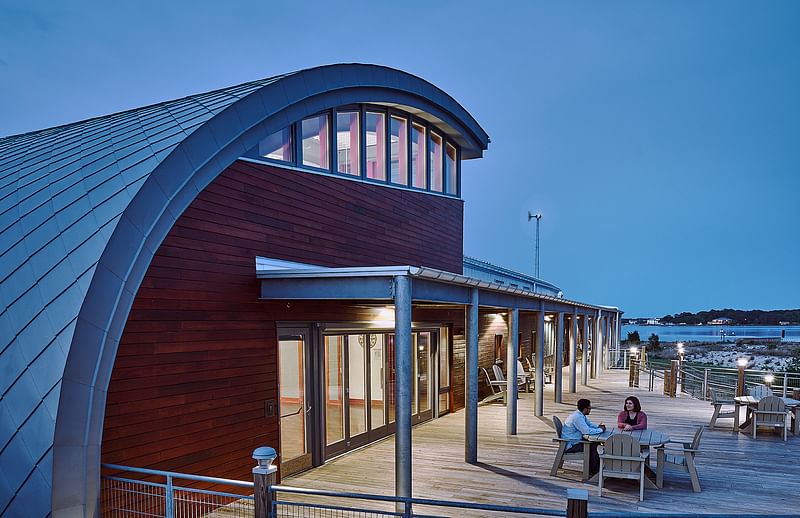
“CBF aspired to manifest true sustainability, creating a landmark that transcends notions of ‘doing less harm’ towards a reality where architecture can create a positive, regenerative impact on both the environment and society. Completion of the Center concluded a successful community effort to save Virginia Beach’s 118-acre Pleasure House Point tract from over-development.”
A community partnership with CBF, the City of Virginia Beach (CVB), and the Trust for Public Land purchased the land, preserving it for open space and environmental education.
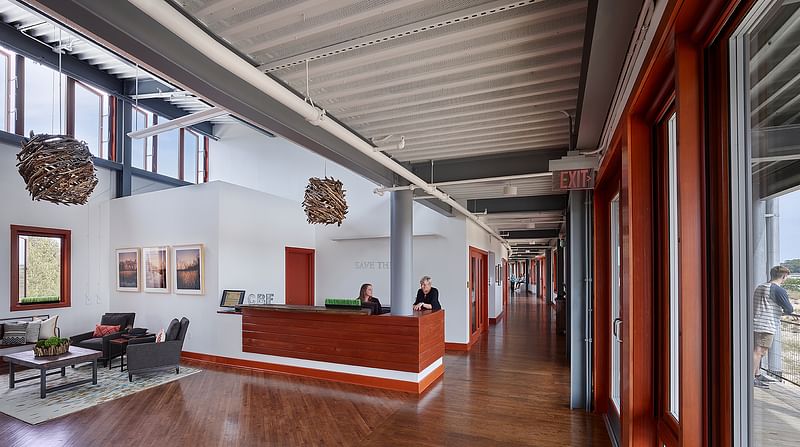
“The Center provides offices for CBF and partner groups, meeting rooms, and an 80-seat conference room.”

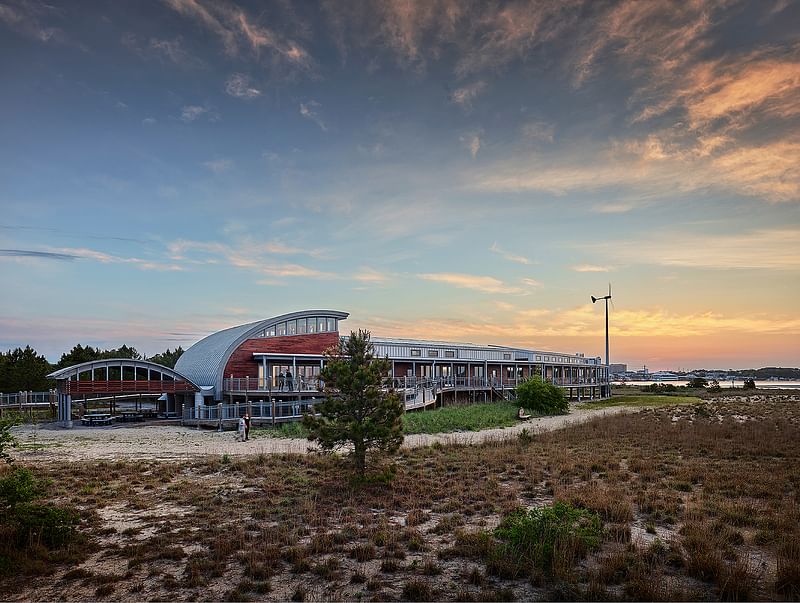
“Locating the Center on an ecologically-sensitive site allowed CBF to implement its entire mission in one location, but necessitated appropriate environmental goals. The curved building form responds to the nearby shoreline, maximizes daylight, and embraces passive solar principles. Prominent, curving roofs recall forms of the site’s wind-swept oaks, the wings of a gull, and the protective shell of an oyster; while also embodying rainwater collection.”

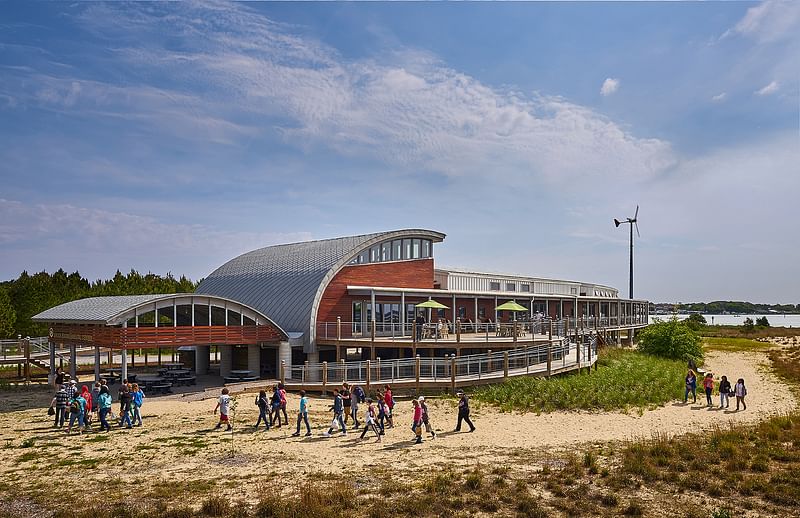
“The material palette references the site’s colors and textures – zinc shingles recall fish scales, cypress cladding reinforces the site’s colors and horizontality, and metals mimic the glistening Bay. Outdoor spaces allow for a reduction in built area, while connecting occupants to the site. A south-facing porch doubles as outdoor workspace. A prominent, outdoor classroom hosts thousands of students each year.”

“This is one of only a dozen projects to be certified to the Living Building Challenge, achieving net-positive water, waste, and energy while addressing health, materials, and equity. It also achieved LEED Platinum,” the AIA COTE jury noted. “This project broke new ground by becoming the first project in its state to gain approval for potable use of rainwater. Design for wellness is exemplary through avoidance of red list ingredients in materials, along with natural ventilation, daylight, and views. The team undertook a thorough post-occupancy evaluation that informed changes and then created a process to communicate lessons learned.”
Find more project diagrams in the gallery below. You can also check out the rest of the AIA COTE 2017 Top Ten Green Projects in the link below.

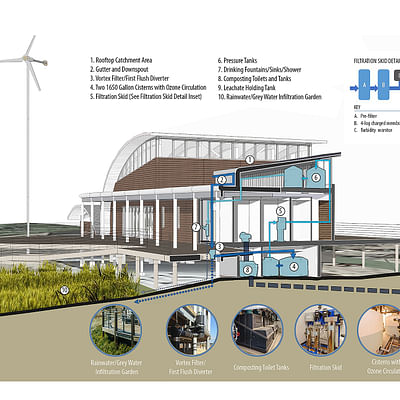


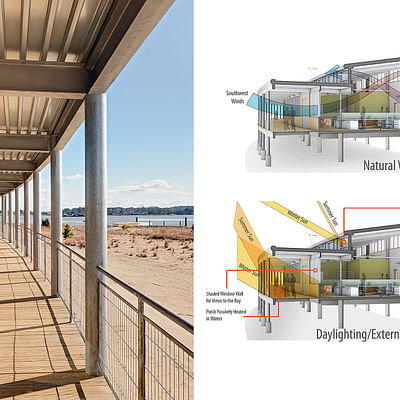
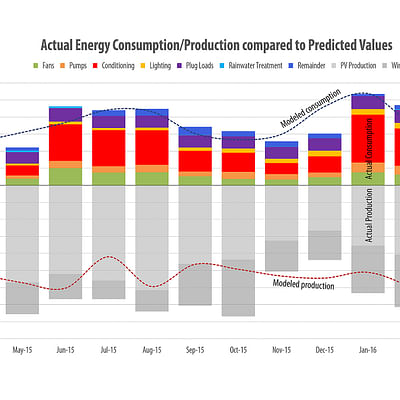

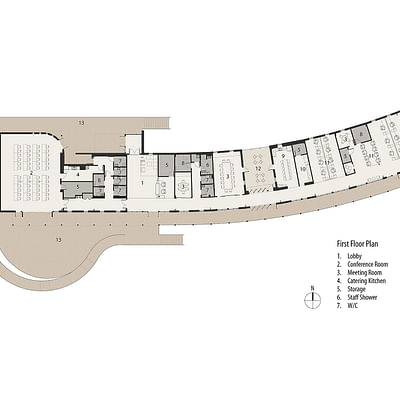
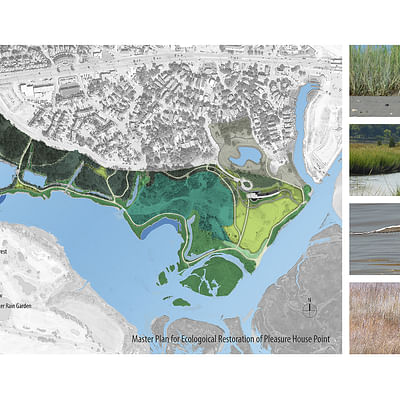
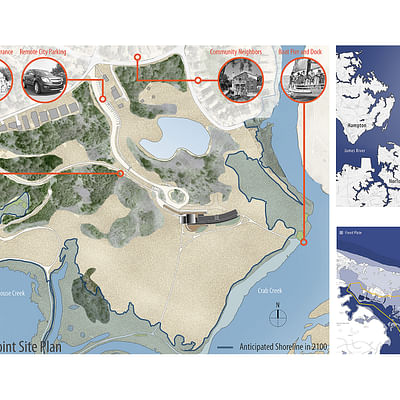

Share
0 Comments
Comment as :